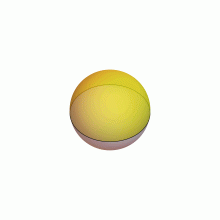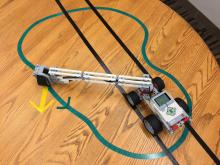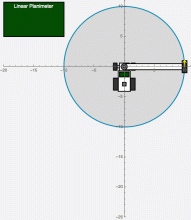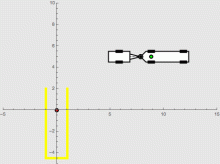Welcome to Yongheng Zhang's Homepage!
Interests
Algebraic topology. Homotopy theory. And applications. I think about configuration spaces (and their variants) of points in spaces and using them to probe questions in algebra, geometry and topology.
Publication
Kaufmann, Ralph M.; Zhang, Yongheng Permutohedral structures on E2-operads. Forum Math. 29 (2017), no. 6, 1371-1411.
Zhang, Yongheng Circle deformation in Hacon's sphere eversion. Bridges Conf. Proc., Online, Aug 2021, 265-268.
Wei, Annie; Zhang, Yongheng Wave, Boy's Surface, and Machine. Bridges Conf. Proc., Aalto, Aug 2022, 17-24.
Art
几何y代数 Merry-Go-Round, July-December 2023.
Preprint
Koytcheff, Robin; Zhang, Yongheng Cubes, cacti, and framed long knots. under review.
Zhang, Yongheng Recollection and Reflection: From Euler to Lagrange in 1Q84.
Zhang, Yongheng Line Integral and Area Without Green.
Zhang, Yongheng A Floatingly Falling Feline. (teaser, solutions)
Current Teaching (Spring 2024)
- MATH 211 Multivariable Calculus
Regular Office Hours
- M 11-11:50 AM, 2-2:50 PM
- Tu 2-2:50 PM
- W 11-11:50 AM, 2-2:50 PM
- Th 9:00-10:50 AM
Office Location
- SMUD 510
Previous Teaching
- MATH 105 Calculus with Algebra (f19, f22: Coraline)
- MATH 111 Introduction to the Calculus (f15)
- MATH 211 Multivariable Calculus (f15, s16, f16, s17, f17, s18, f18, s19, f19, s20, f20, s21, f21, s22, f22, s23)
- MATH 260 Differential Equations (s18: fiction by Cindy Lopez)
- MATH 345 Functions of a Complex Variable (f16: poem by Greg Carroll, f18: online game by Sai Chauhan, f23: 186 homework problems, story by Kiara Falcasantos, What are Laplace Transformations by Jessica Huang, computer rendering of color plots by Arden Kolodner and Emma Keenan, fluid dynamics by Madison Suh)
- MATH 350 Groups, Rings and Fields (f17, s19)
- MATH 355 Introduction to Analysis (s16, s20)
- MATH 455 Topology (s17: 50 lessons [90MB] 50 lessons without notes [20MB])
Teaching at Purdue
- Geometry for Elementary Teachers
- Topology for High School Students (notes by Hannah Burnau)
- Calculus I, II, III
- Linear Algebra
- ODE and basic PDE
Living Proof
Where Theory meets Chalk, Dust Flies
Math from Three to Seven by Zvonkin
Tokyo 2020 Emblems
The Last Voyage of Ulysses & Pierced by a Sun Ray
The Mathematical Intelligencer (open accessed)
Mathematical Omnibus: Thirty Lectures on Classical Mathematics
(It contains a very clear exposition on an accessible proof of the insolvability of the quintic, and much more.)
Essays in Constructive Mathematics by Harold M. Edwards, with Contribution by David A. Cox
How to Prove it: A Structured Approach by Daniel J. Velleman (international best seller)
What does it feel like doing mathematical research?
Like what is described in this music video. (turn on the English translation)
By the way, we wander around and do this kind of dance a lot after school in the 1990s, before being found by parents and dragged back home.




